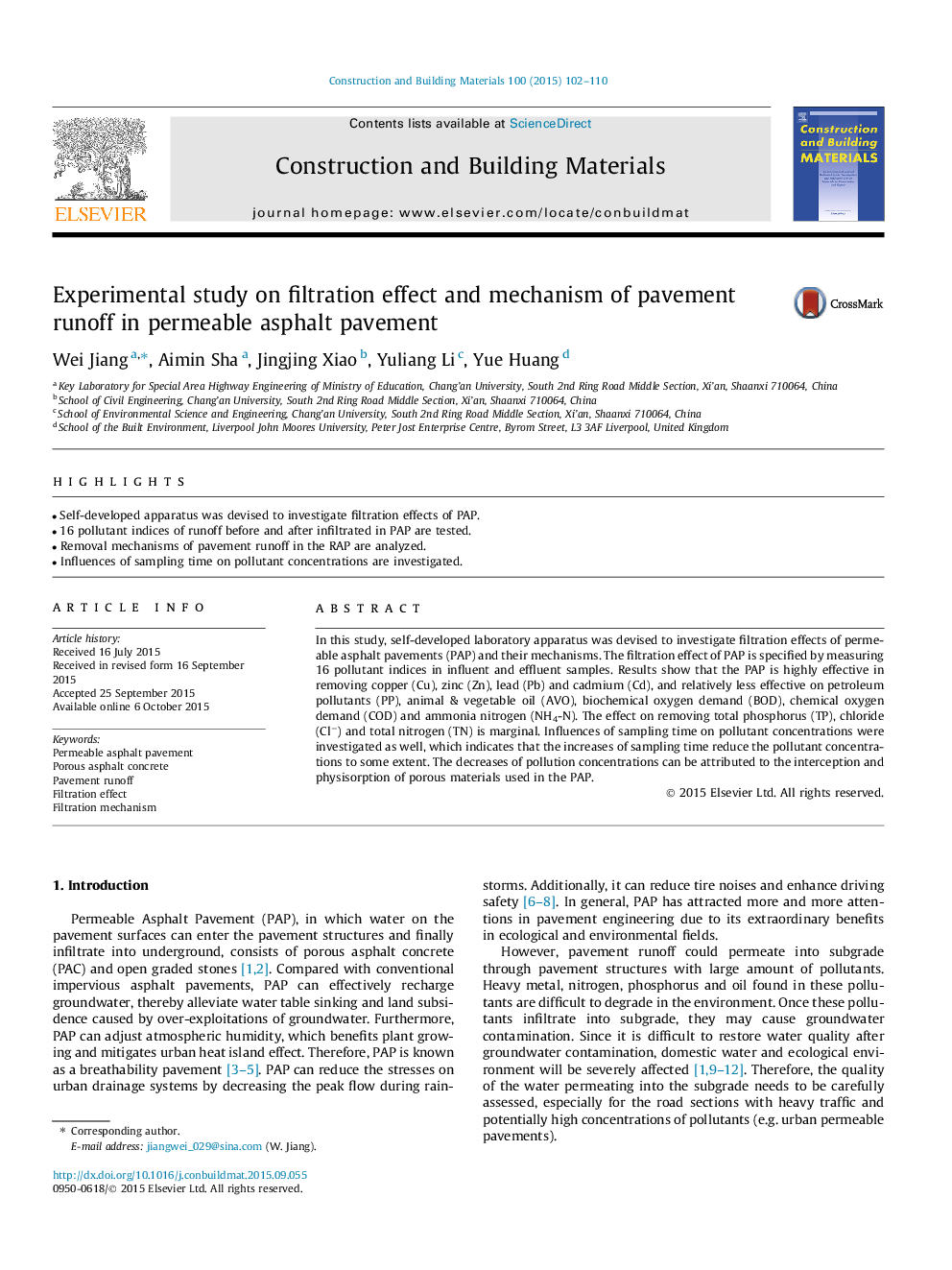| Article ID | Journal | Published Year | Pages | File Type |
|---|---|---|---|---|
| 256544 | Construction and Building Materials | 2015 | 9 Pages |
•Self-developed apparatus was devised to investigate filtration effects of PAP.•16 pollutant indices of runoff before and after infiltrated in PAP are tested.•Removal mechanisms of pavement runoff in the RAP are analyzed.•Influences of sampling time on pollutant concentrations are investigated.
In this study, self-developed laboratory apparatus was devised to investigate filtration effects of permeable asphalt pavements (PAP) and their mechanisms. The filtration effect of PAP is specified by measuring 16 pollutant indices in influent and effluent samples. Results show that the PAP is highly effective in removing copper (Cu), zinc (Zn), lead (Pb) and cadmium (Cd), and relatively less effective on petroleum pollutants (PP), animal & vegetable oil (AVO), biochemical oxygen demand (BOD), chemical oxygen demand (COD) and ammonia nitrogen (NH4-N). The effect on removing total phosphorus (TP), chloride (Cl−) and total nitrogen (TN) is marginal. Influences of sampling time on pollutant concentrations were investigated as well, which indicates that the increases of sampling time reduce the pollutant concentrations to some extent. The decreases of pollution concentrations can be attributed to the interception and physisorption of porous materials used in the PAP.
